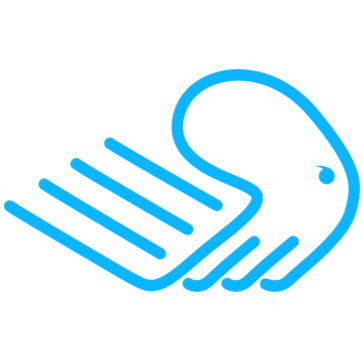
Create Websites with CHEETAH
A detailed look at banners (1)
The special feature, which makes "Cheetah" so suitable for the "Rapid Design", are the multiplicity of prefabricated banners, which are offered in the banner selection in different categories. It is undoubtedly less time-consuming to select suitable banners for one's purpose and then to adapt them to one's own problem in the editor than to start with empty banners and then to design them laboriously by oneself. It is therefore a good idea - at least randomly - to have a look at some of the prefabricated banners in the editor in detail to learn something about their structure and their design.
The "most essential" property of a banner is its height, which you can adjust continuously with the mouse (small blue circle at the bottom center) or pixel-exactly via the "Height" property. A note on this in a moment:
Note: When structuring a web page, it is a perfectly good idea to organize it in a relatively small way using banners, unless there are other reasons not to do so (for example, a longer menu structure on the left or right banner area). Because this brings many advantages with itself, if it comes later once to extend the web page. You only need to increase the height of the corresponding banner a little bit and in this way you immediately gain space for new elements or for more text. All banners below will move down without any changes being necessary.
Often you need to arrange structural elements analogous in their nature in strips on a web page, as the following example from the builderall-power website shows:
In such a case you should carefully (and finally) design the first banner and then use the clone function of its header menu to create a copy from it. It will then be created at the bottom of the web page 1:1 to the original and can then be moved to its correct position using the "Order Panels" in the banner properties. Now you only need to replace texts and possibly images / videos, without the need to place and arrange all these elements separately again on a new empty banner.